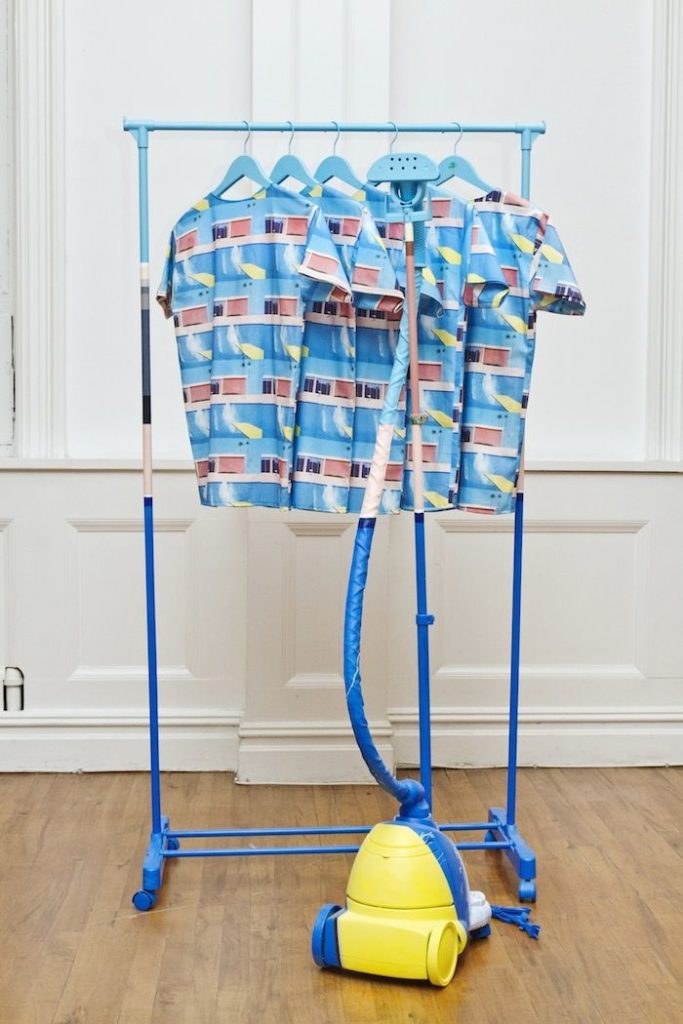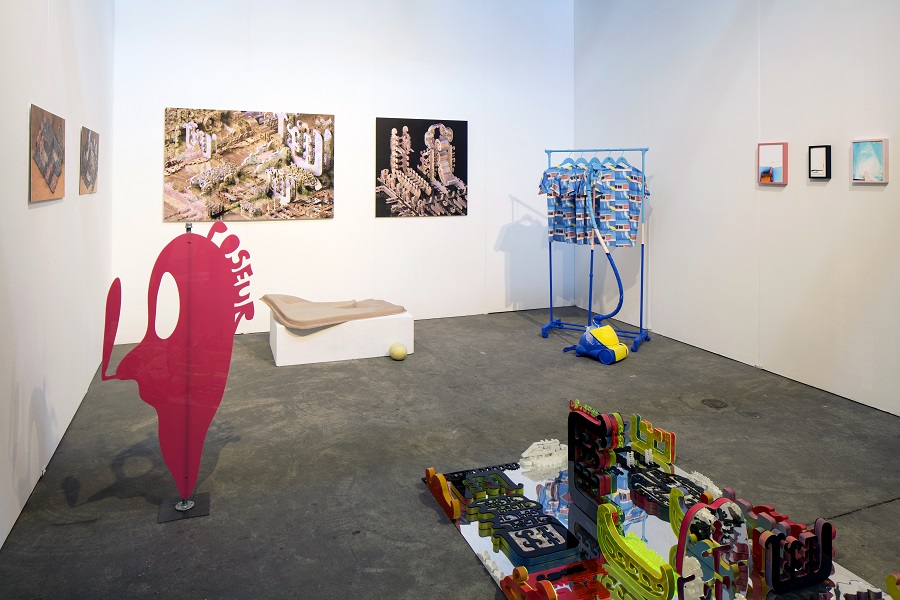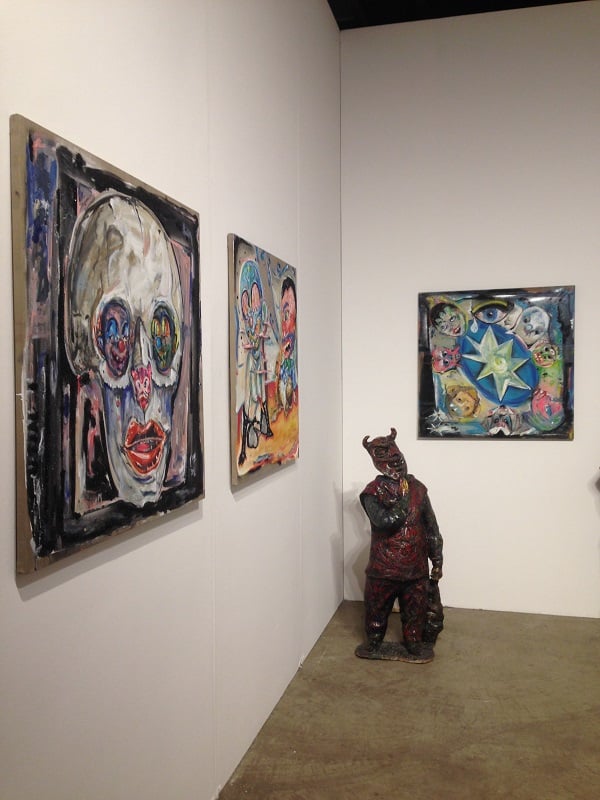Art Fairs
What Makes NEWD Art Show Special?
Unpacking Bushwick's counterpoint to the existing art fair model.

Unpacking Bushwick's counterpoint to the existing art fair model.

Cait Munro


American Medium‘s booth, with work by Brenna Murphy and Jon Rafman.
Photo Courtesy of American Medium
It was only a matter of time before two of the biggest trends in recent history, art fairs and Brooklyn, came together to spawn something that would either be wholly terrifying or pretty awesome.
In conjunction with the eighth year of Bushwick Open Studios, this weekend marked the inaugural edition of NEWD Art Show, Brooklyn’s second-ever art fair (2012’s Bushwick Basel failed to stick). And luckily, it turned out to be pretty awesome. Held in an airy warehouse in the heart of Bushwick, the fair billed itself as “a counterpoint to the existing art fair model,” due to its emphasis on emerging artists and presenting a diverse array of curatorial voices.
For a fair in its first year, NEWD felt surprisingly cohesive. With very few exceptions, the art on display was fresh and less scruffy than one might imagine. The digestible size and relatively calm atmosphere provided a welcome break from the alcohol-soaked streets and exhausting proliferation of artist studios that comprised the majority of the weekend.

THEODORE: Art‘s booth, featuring works from Scooter LaForge and Bill Mutter.
But, while the names, location, and energy were a departure from the traditional model, an art fair is still an art fair (even when it’s called an art show). And so, the question must be asked: just because a fair takes place in an up-and-coming neighborhood and highlights emerging artists from emerging art spaces, does that really make it “alternative”? Did NEWD actually provide a counterpoint to the existing art fair model, or just an edgier, hipper, more self-aware version of it? Well, it’s hard to say.
While money will never be at the bottom of the agenda for artists and commercial gallerists at a fair, the consensus seems to be that NEWD did a great job of thwarting the money-grubbing mentality. Most notably, it was completely free to the public, which drew visitors who would not or could not afford to drop $45 for admission to a fair like Frieze. The costs for exhibitors were low, as the VIP preview held the night before public opening “[served] as a fundraiser to defray the cost of participation,” according to the invitation. This enabled non-commercial and nonprofit art spaces to participate. One of these spaces, Residency Unlimited, had a buzzed-about booth showing colorful, free form paintings from Costa Rican artist Andres Carranza. Residency Unlimited program director Boshko Boskovic noted that NEWD “created an environment showcasing a variety of contemporary artworks that might not have been viewed in an art fair setting.”

Sophie Hirsch, Untitled (2014), SIGNAL Gallery
Photo courtesy of SIGNAL Gallery
On the whole, commercial galleries were enthusiastic as well. Alexander Johns of SIGNAL Gallery enthusiastically remarked, “[NEWD] featured a grouping of galleries and art organizations that felt truly cohesive and complementary. And it was free to the public! I’m fairly blown away really. I’ve never been to, or participated in, an art fair that felt as good.” Yevgeniya Baras of Regina Rex added, “the limited number of booths meant the experience was concise and not endless like larger fairs…there was a communal feeling in the atmosphere.”
Most visitors would likely agree. NEWD had none of the glittering excess typical of an art fair experience—there were no crazy crowds, no art advisers whisking their well-heeled clients about, no velvet-roped VIP areas. There was food and soft drinks, but no bar. It was a wholesome, enjoyable experience where art was shown, people came to view it, and some people decided to buy it. Oh, and they also made a parody of that Christie’s video with the skateboard.
In truth, the traditional art fair model has grown so bloated that no amount of “counterpoint fairs” are going to subvert it before it decides to burst. However, events like NEWD can serve as a reminder that there are people in the art world interested in something other than massive profits…just normal-sized profits will do. If Bushwick Open Studios shows that there is a bounty of new work being produced and even more people who want to see it, NEWD proves that there is a willingness to create an infrastructure around it that allows it to continue. We look forward to seeing what NEWD has in store again next year.

Residency Unlimited’s booth, with work from Andres Carranza.
Photo: The Morrisons